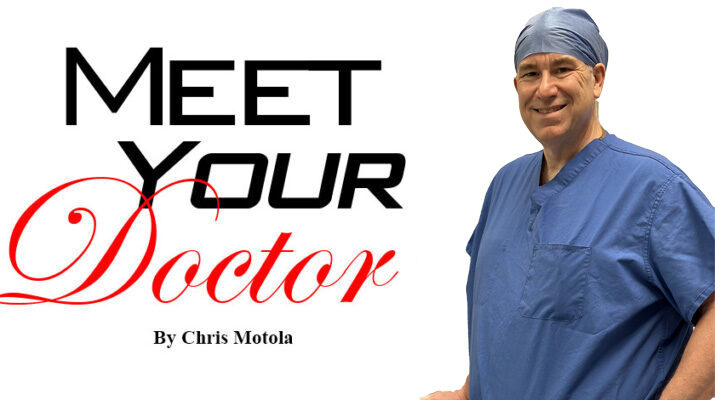For new chief of anesthesia smaller community hospitals like Oswego Health are the wave of the future. He explains why
Q: How have your first few days as chief of anesthesia at Oswego Health been?
A: They’ve been wonderful. I’ve found the cafeteria, and I’ve found the OR and I’ve found the restroom, so I’m pretty much set. To be honest with you, the hospital is amazing. One of the things I really appreciated when I interviewed here and enjoy now that I’m here is that it’s a community hospital. Community hospitals and smaller hospitals are the wave of the future. Right now big cities are being overwhelmed. They’re struggling to meet the needs of their communities where we have the luxury of being able to provide top-notch care. When you only have seven ORs instead of 50, you can really focus on those ORs and make them quality places. The nurses are able to spend time with patients in their rooms. I truly believe that if you’re going to get care for everyday normal issues like gall bladder surgery, appendectomies or pneumonia, this is where I’d want to be. Obviously if you need a heart transplant we can’t help you here at Oswego, but for most of the needs of our community, we can not only meet them but exceed them.
Q: What kinds of anesthesia needs does a hospital like Oswego have?
A: We have the ability to do kidney stones, gall bladders, appendixes, gastrointestinal, hernia, thyroids; things that people in the community might commonly need and don’t want to travel far for. They want to be where their family can visit them. If they have to stay overnight, their loved ones can bring them their pajamas. One thing we do that you don’t always see at community hospitals is gastric bypass surgery. We’re able to do them and do them well.
Q: How many personnel do you oversee?
A: Right now there are five anesthesiologists and, I believe, six CRNAs [certified registered nurse anesthetists]. We’re trying to grow it, but post-COVID there’s a national shortage of health workers all over. But to be honest with you, we’re doing very well here in our community. We are not using a lot of travelers — people coming in from the outside. We are mostly local providers and nursing staff. So the people who are treating you are the people who are living here.
Q: Do you find that makes a big difference in terms of commitment?
A: Big time. You always want to have local providers. This is your community, the people you want to see healthy. You see them on a more regular basis. Obviously, anesthesiologists aren’t people you’re going to see all the time, but it’s nice to have locally committed people. I live five minutes from the hospital. I have an investment in the area. I want my people to be successful. This is my community. This is where I’m going to shop, go to eat and go to Harborfest.
Q: As far as building a relationship with patients, your patients are going to be unconscious a lot of the time, but it’s also maybe the specialty in which patients are putting their lives in your hands. How do create a sense of trust there with such limited time?
A: If you talk to patients, a lot of the time they’re less nervous about the surgery itself than they are of losing control. It’s a skill, and it’s something I pride myself in. In a short period of time, I have to convey a sense of confidence. Having a sense of humor, a smile and sense of professionalism helps. If the patient is nervous, give them an extra minute and help them try to understand what’s going on. Letting them know that they’re important and that we’ve got them. They’re not going to be alone. There’s someone who is invested in their safety and health. That’s something I try to impart to them.
Q: Is anesthesiology a specialty that’s still evolving, or do we more or less have it down to a science?
A: Every day there’s a new revolution. One area that’s evolving is multi-modal pain control. The opioid epidemic has us minimizing narcotic usage. We still give it when you need it, but multiple kinds of medication are used for different kinds of pain. Opioids, for example, don’t even address every kind of pain. There are many different ways to address pain. The same goes for post-operative nausea. We treat it preventatively pre-op, as well as post-op. Some of the things stay the same, but there’s always a significant effort to improve the patient’s experience with pain, nausea and recovery. We try to make it so they can get out of the hospital sooner. Not because we want to get rid of them, but because they’re able to leave sooner. With more patients and less providers, it also means we can see more patients.
Q: What is the hardest operation to do anesthesia for?
A: At Oswego, the most challenging would probably be pediatrics. There’s an emotional and communication component, as well as different reactions to a lot of medications. So you have to be very conscientious of their needs. Outside of Oswego? I would say lung resections and aortic operations and transplants. They get very complicated.
Lifelines
Name: Mark E. Vadney, D.O.
Position: Chief of anesthesiology at Oswego Health
Hometown: Medfield, Mass.
Education: University of New England College of Medicine in Maine (2006)
Affiliations: Oswego Health
Career: Has experience developing regional anesthesia programs, including at the FF Thompson Hospital, affiliated with university of Rochester Medical Center, Guthrie Corning Hospital, Canton Potsdam Hospital Samaritan Medical Center, and SUNY Upstate Medical Center.
Organizations: Fellow of American Society of Anesthesiology
Hobbies: Skiing, boating, camping, fishing.

